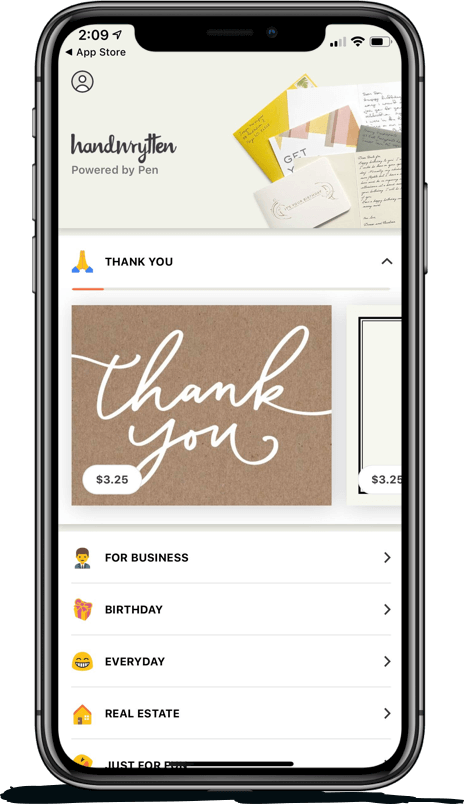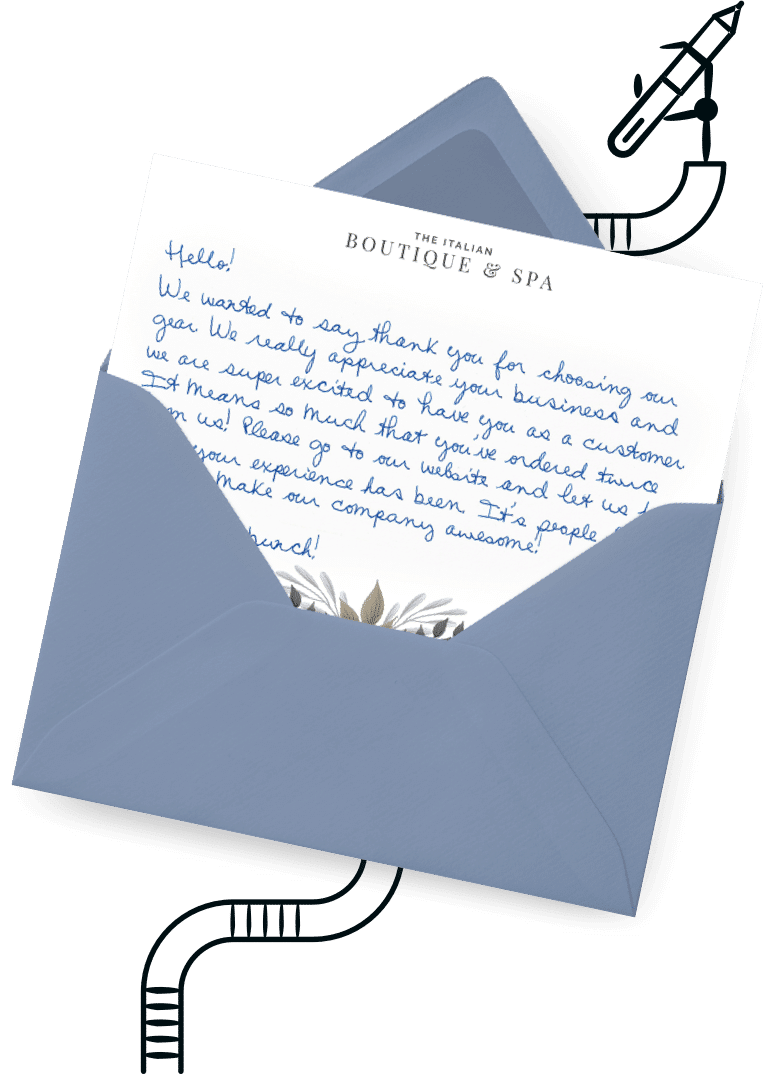
9280 S. Kyrene Rd.
Suite 134
Tempe, AZ 85284
Phone: +1 (888) 284-5197
Email: contact@handwrytten.com



You have been subscribed. Thank you!
When it comes to fundraising, one of the most important aspects is building good relationships with donors. It’s essential to understand the different types of key donors and how best to interact with them in order to maximize donations. Whether you are looking for major gifts, recurring donations or even just a single donation from an individual donor, there are certain techniques that can be used when interacting with each type of donor. Knowing how to recognize and engage these different types of donors will help ensure your organization receives the support it needs. In this article we’ll explore some common donor types and discuss effective ways to build strong relationships with them.
A quick Google search on the types of donors that exist in the non-profit space results in a lot of conflicting information; some sources say that there are just 3 types of donors, while others say that there are as many as 7. We want to put all of the best information into one place so that it’s intuitive to understand the different types of people, or organizations, that may donate to your non-profit.
Relationships and engaging with every type of donor is very important, meaning understanding how each different type of donor prefers to be communicated with is crucial for raising funds and creating better relationships. Let’s begin with prospects – donors who you have not gotten donations from yet, but are potentially interested in doing so.
Building strong relationships with prospective donors can often be the difference between getting and not getting a donation. Prospective donors are people, or organizations, that have not yet made a donation to your non-profit. These potential donors include people who may be interested in donating but haven’t taken the steps to make a gift yet, or even just people who fit into the demographic that your non-profit is trying to market to.
It’s important to reach out and engage these potential donors with clear communication about what your organization does and how donating will help your cause. Without giving these donor prospects clear information to explain what your organization does and how you help the world, they will never have a reason to commit to donating to you, or even to learn more about your organization.
Keep in mind, the first interaction you have with anybody is the most important one. If your first impression on potential donors doesn’t give them a good understanding of who you are or what your organization does, developing a personal connection will be very difficult. Your first communication with prospective donors can appear in multiple different forms, ranging from an informative article posted on social media, all the way to sending mailers out to those in the demographic you want to appeal to.
Individual donors are individuals who may donate on a one-time or recurring basis. It’s important to recognize the individual needs and preferences of your individual donors – some may prefer to be updated via email while others may want to be called more often. Regardless of their preference, it’s essential that you make sure that you thank each and every donor for their contribution and make sure to take the time to build a strong relationship.
These donors have already donated in some capacity to your charity, and they are prime candidates to develop a further relationship with. Since they already understand what you, as an organization, do, you can send them a thank you after their donation along with extra information about where their donation is going to go.
From there, you can send them recurring updates about what your organization is doing and how they can get involved in ways other than giving you more money. Ultimately, this should be your goal as a non-profit – to create a long-lasting community that shares your own core beliefs. This will not only have a net positive on society, but it will also allow your fundraising to reach new heights.
Major donors are a subset of individual donors because, well, they are individuals.
But major donors, more often than not, have stuck with your non-profit for a long time and have developed a strong relationship with you that has led to them donating larger and larger amounts of their money or time. These relationships are especially essential to cultivate.
When you have a major donor who believes in your cause, it is crucial to communicate with them in the way that they prefer. Meaning, asking them leading questions that will help you understand how they prefer to be communicated with is best.
For example, with a major donor who has been with your organization for a long time, you could ask things like:
These are very broad questions – but that’s intentional. What you want is to get major donors to tell you exactly how they feel about your non-profit so that you can make them feel heard and understood. In doing so, they will feel closer to you, understanding that you truly care about what they want, which in turn will allow you to provide a better experience for your donors all around.
Ultimately, discussing with your board members on the best ways to steward major donors of yours is important – without having a unified plan about how you want to interact with them, you can appear incongruent with one another.
The other common type of individual donor is a recurring donor. Recurring donors are donors who give on an ongoing basis. This could be anything from a monthly donation to an annual one-time gift. Similar to major donors, they have known your charity for a long time, and they have an emotional investment in what you provide for society.
These types of donors are especially important because they provide a reliable source of income for your non-profit, but primarily, they are your strongest advocates. As such, you want to recognize and appreciate them in any way you can. This could mean thanking them on social media, sending out a special newsletter specifically for recurring donors, or even giving them something special like a gift card for their donations.
Similar to what we mentioned above about prospective donors, you should offer recurring donors ways to get involved in the community other than giving you small donations. You can give them opportunities to network with other donors, or even ask them to volunteer for fundraising events.
Corporate donors are companies or organizations that give large sums to non-profits, often in the form of sponsorship or matching grants. Building strong relationships with corporate donors can be especially beneficial for non-profits, as these donations can often be substantial and provide a great deal of visibility for your organization. It’s important to make sure that you are presenting yourself in a professional manner and providing clear information about the impact that their donation will have on your organization.
Do note that most corporations are not necessarily donating to your organization solely out of the desire to be philanthropic; they likely have a vested interest in getting recognition from your organization. Like mentioned above for major donors, you can ask your corporate donors about the ways that they would prefer to be recognized so that you can meet their needs.
Some common ways to show corporations that you appreciate them include:
Doing so will help build a strong relationship that can be beneficial for both your organization and the corporate donor in the future.
A foundation is not necessarily an organization or even an individual; more often than not, a foundation is money set aside by someone solely to fund programs. They are partially philanthropic, and partially beneficial for whoever created the foundation because their donation can fall under the tax free status set by the IRS. By giving away a specific amount of money within the fund, this money won’t be taxed.
Building a relationship with a foundation as a nonprofit organization usually involves some level of research to determine foundations that may be interested in donating to you. Different from corporations, they prefer to fund non profit organizations who have a track record of accomplishing the mission set forth within their goals.
This means that when it comes to communicating with foundations, you want to make sure that you are presenting the information about your non-profit in a professional, organized manner. This could mean sending out press releases and updates, providing detailed financial reports, and pitching your organization to the foundation itself.
Giving them clear-cut information that shows them exactly how their donation was used will show to them that you understand what they need from you, and it will also show them that their donation was used in a good way.
Additionally, you should make sure that you are taking advantage of any networking opportunities – such as conferences or meetings – that the foundation may offer. This can provide you with an opportunity to build a strong relationship with the foundation, which could lead to more grant funding in the future.
We’ve gone into the nitty gritty of the best way to interact with different types of donors already, but let’s sum it up to make things simple.
For prospective donors: Offer them as much as information about your mission as possible. If they don’t understand who you are, what you do, and why they should want to support you, there is no reason for them to donate.
For major donors: Major donors have likely been with your organization for a time, so they understand what you do. To retain them as a long-term partner, continually ask them for feedback on how you can communicate better, and how you can better appeal to what they desire. In doing so, you can develop a better relationship with them while also receiving more large donations.
For recurring donors: Similar to major donors, recurring donors understand your mission. They may not donate as much as a major donor, but that doesn’t matter – ensuring that they feel like a valued member of your community is crucial. Refer them to volunteering and networking opportunities relevant to your organization to help them feel like they are having a greater impact than just donating money.
For large corporations: Few corporations solely donate out of good will, and most will likely prefer to get some kind of publicity or marketing opportunities through your relationship. Shout them out on social media, host an event with their name tied to it – but make it clear that you are proud of your relationship with them.
For foundations: Last but not least, when interacting with private foundations, you want your mission to be at the forefront of their minds. The donation purposes a foundation has for funding your non-profit likely stems from a desire to see their donation have an actionable impact – recurringly offer them updates on where their money is going and how it is benefiting you.
One easy way to make sure that you can stay in line with all of these different types of donors is by using a donor management system. The most basic donor management system could be a Google Sheet where donors are listed with the type of donor they are next to their name; more advanced systems take advantage of proprietary software to contact specific types of donors at specific intervals.
Once you’ve segmented your donors by the different type of donor that they are, we can help you reach out to them exactly when you want.
Based on data compiled in our 2022 Consumer Outreach Survey, handwritten cards and notes are 32 times more meaningful than a brochure, and 8 times more meaningful than an email. By default, that means that a handwritten nonprofit direct mail has a higher return on investment than standard one.
Even with that in mind, you may still be thinking – ‘I still have bigger fish to fry than writing thank you cards all the time’. And that is extremely fair. But in 2022 and beyond, technologies evolve and will continue to evolve that allow us to live easier, more fastidious lives.
Automation and technology are tools that continue to grow and save us time – services like Zapier allow you to automate and integrate services, ultimately allowing you to spend time on things that you know are immediately urgent. With Handwrytten, you can get that same kind of benefit.
Our industry-standard handwriting robots are the first of their kind, and combined with our multi-platform app, you can design your handwritten cards whenever and wherever you need to.
There are multiple different handwriting styles to choose from to personalize what you send, and after you’ve typed up what you want your handwritten letter to say, we handle everything else for you – writing, packaging, and shipping. We can even insert mail inserts within the envelope to emphasize to clients: “We care.”
This level of support will not go unheard – with so many donors receiving gifts, thank-you cards, and welcome letters, all handwritten – you can set yourself apart when it comes to delivering a quality customer experience.
But most importantly, using Handwrytten to send handwritten cards will finally allow you to check that final to-do off your list, to complete that decidedly important donor or client outreach that could be the difference between customer retention and lack thereof. With our automated handwriting robots and our simple-to-use platform, there is no reason not to take advantage of the benefits we can offer you.
Check out our services now if you’re interested in learning more – we offer specific platform integrations for automotive marketers, real estate marketers, and more!
Overall, it is essential to communicate effectively with your donors so that you can build strong relationships and ensure that they are satisfied with their experience. By taking the time to ask the right questions, providing clear information about your organization and its impact, and showing appreciation for their contributions, you can ensure that your donors feel valued and respected. In turn, this will help to strengthen their connection with your organization and increase their likelihood of continuing to give in the future.


Scale your handwritten outreach, creating positive impressions and long lasting bond.
Sign Up Today!


Over 100 designs to choose from or design your own. Our online card customizer makes it simple.
Check Out Our Cards!





